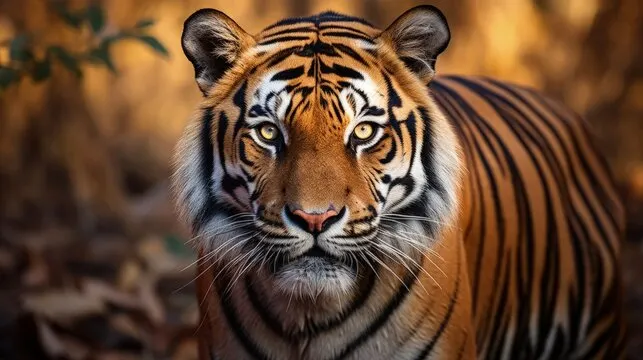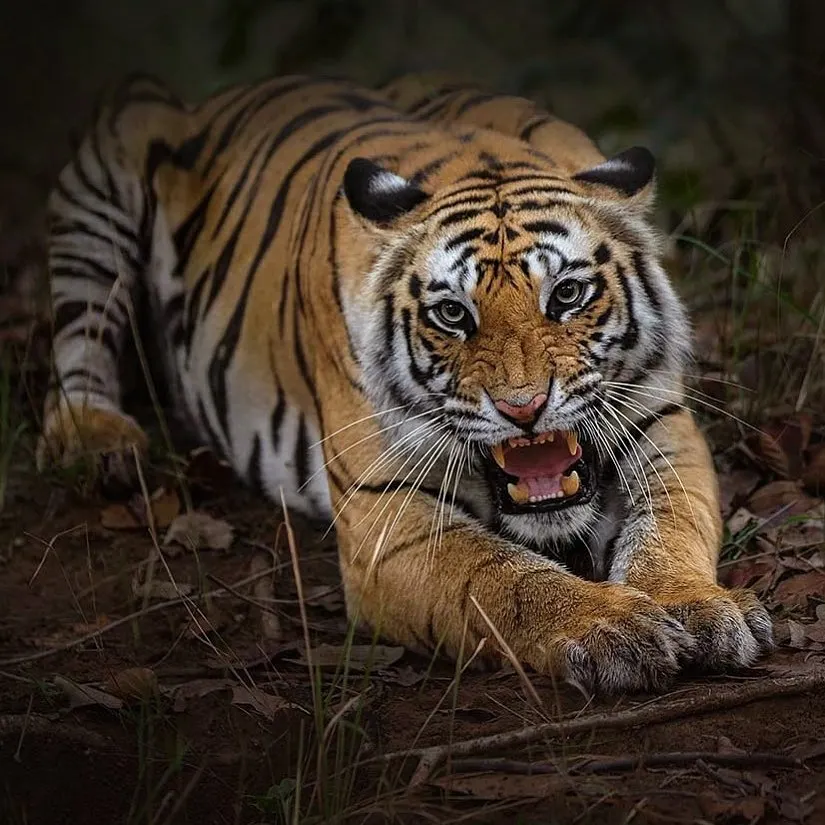“Bengal Tiger: The Iconic Predator of the Indian Jungle”

The Bengal tiger (Panthera tigris tigris) is one of the most majestic and powerful animals in the world. Revered in mythology, feared in the wild, and celebrated in conservation, this subspecies of tiger is native to the Indian subcontinent and represents the largest population of wild tigers globally. Known for its striking orange coat with bold black stripes, the Bengal tiger is not just a symbol of strength and courage, but also a keystone species vital to the health of its ecosystem.
This article explores every facet of the Bengal tiger, from its biology and behavior to its cultural significance and conservation challenges.
🐅 Classification & Physical Characteristics
- Scientific Name: Panthera tigris tigris
- Family: Felidae
- Order: Carnivora
- Lifespan: 10–15 years in the wild (up to 20 in captivity)
- Weight: Males: 180–260 kg | Females: 100–160 kg
- Length: Up to 10 feet including tail
Appearance:
The Bengal tiger has a vivid orange coat with black vertical stripes, a white underbelly, and a long tail with black rings. Each tiger’s stripe pattern is unique, like a human fingerprint.
🌏 Habitat & Distribution
Bengal tigers primarily inhabit:
- India (home to ~70% of wild Bengal tigers)
- Bangladesh (notably the Sundarbans mangrove forests)
- Nepal
- Bhutan
Preferred habitats:
- Tropical and subtropical rainforests
- Grasslands and savannas
- Temperate forests
- Mangrove swamps
They require large territories with access to water, prey, and dense vegetation for stalking.
🍖 Diet & Hunting Behavior
Bengal tigers are apex predators and obligate carnivores. Their diet includes:
- Deer species (chital, sambar, barasingha)
- Wild boar
- Bovines like gaur and domestic livestock
- Occasionally birds, monkeys, reptiles, or fish
Hunting strategy:
They are solitary hunters and ambush predators, relying on stealth rather than speed. A tiger may stalk its prey for several minutes before launching a powerful, sudden attack. It targets the throat or nape to suffocate the prey.

🐯 Behavior & Social Structure
- Solitary animals: Except during mating or when raising cubs
- Territorial: Males control large areas, overlapping with territories of several females
- Marking territory: Scent marking, scratch marks, and vocalizations
- Communication: Roars, growls, chuffing sounds, body language
Roar range: A Bengal tiger’s roar can be heard over 3 km away and is used to communicate across long distances.
🐾 Reproduction & Cubs
- Mating season: Year-round (peak in winter & early spring)
- Gestation period: ~100–110 days
- Litter size: 2–4 cubs (occasionally up to 6)
- Cubs born blind and helpless
- Weaning: ~6 months
- Cubs stay with the mother for up to 2.5 years
Tiger mothers are fiercely protective and teach their cubs hunting and survival skills.
🛡️ Conservation Status
- IUCN Red List: Endangered
- Estimated wild population: ~2,500 Bengal tigers
- Major threats:
- Poaching for skin, bones, and body parts used in traditional medicine
- Habitat loss due to deforestation and human development
- Human-wildlife conflict in buffer zones of national parks
- Prey depletion due to illegal hunting
Key conservation programs:
- Project Tiger (India) – Launched in 1973, creating protected reserves
- WWF and Global Tiger Forum – Work internationally to conserve tiger habitats
- Camera traps and genetic surveys – Used to monitor populations
- Relocation and ecotourism strategies – Aimed at balancing wildlife and human needs
🧠 Cultural and Religious Importance
- Bengal tigers are national animals of India and Bangladesh
- Symbolize royalty, strength, and protection in many South Asian cultures
- Featured in ancient Indian texts, Hindu mythology, and tribal folklore
- Durga, a major Hindu goddess, is often depicted riding a tiger as a symbol of power
🔍 Unique Traits & Lesser-Known Facts
- Bengal tigers can swim long distances and often cool off in water.
- They have night vision six times better than humans.
- A single male may patrol a territory of 60–100 square kilometers.
- Each tiger requires 6–10 kg of meat per day, though they can eat up to 30 kg at once.
- White Bengal tigers are a rare color morph, not a separate subspecies.
- Bengal tigers can leap over 10 meters in a single bound.
- They play a vital role in maintaining the ecological balance of their habitat by controlling herbivore populations.
- Whiskers help tigers navigate in darkness and sense nearby objects.
- Tigers use facial expressions and ear positions for communication.
- The Sundarbans tiger population is unique in its semi-aquatic habitat and swimming ability.

✅ Conclusion: Protecting a Majestic Predator
The Bengal tiger stands as a symbol of wilderness and resilience, but its survival is increasingly under threat. Conservation success stories show that with strong protection, education, and community support, tiger populations can recover. Ensuring a future for the Bengal tiger means preserving entire ecosystems, benefiting both wildlife and humanity



